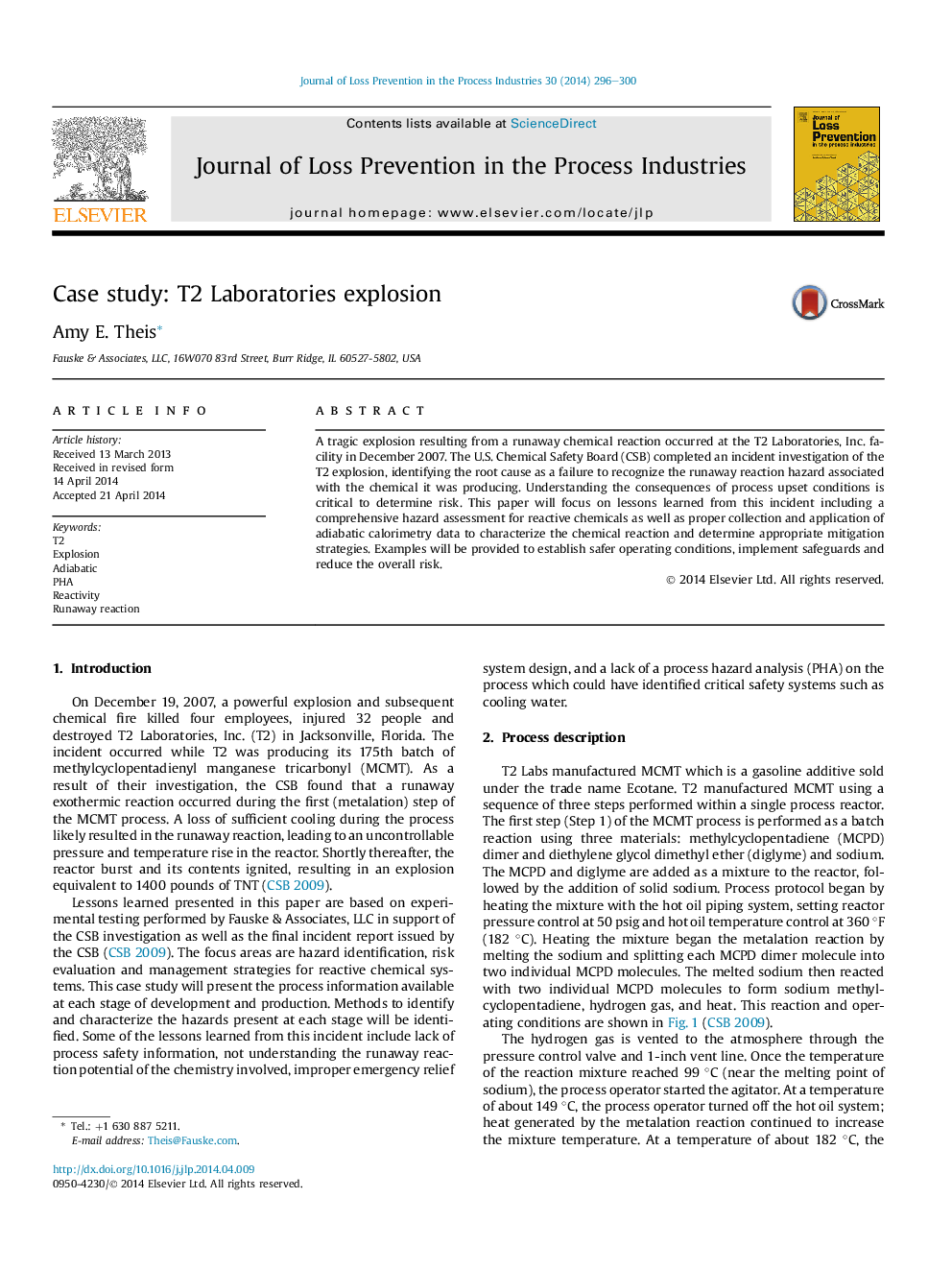| Article ID | Journal | Published Year | Pages | File Type |
|---|---|---|---|---|
| 586204 | Journal of Loss Prevention in the Process Industries | 2014 | 5 Pages |
•Identify lessons learned from T2 explosion due to a runaway chemical reaction.•Review tools and methods for identification of reactive chemical hazards.•Understand the value of process hazard analysis (PHA) for a process design.•Demonstrate the role of adiabatic testing to characterize the reaction and potential consequences.•Recommend practices for safer design of processes involving reactive chemical hazards.
A tragic explosion resulting from a runaway chemical reaction occurred at the T2 Laboratories, Inc. facility in December 2007. The U.S. Chemical Safety Board (CSB) completed an incident investigation of the T2 explosion, identifying the root cause as a failure to recognize the runaway reaction hazard associated with the chemical it was producing. Understanding the consequences of process upset conditions is critical to determine risk. This paper will focus on lessons learned from this incident including a comprehensive hazard assessment for reactive chemicals as well as proper collection and application of adiabatic calorimetry data to characterize the chemical reaction and determine appropriate mitigation strategies. Examples will be provided to establish safer operating conditions, implement safeguards and reduce the overall risk.
